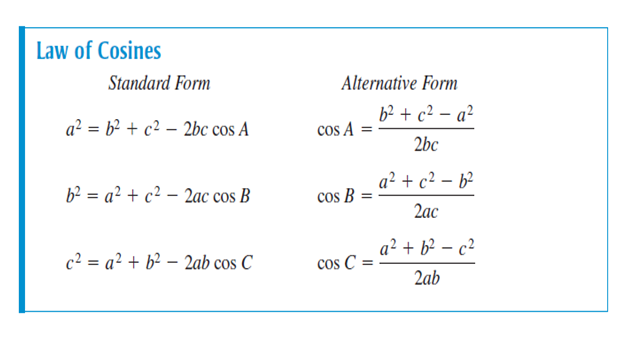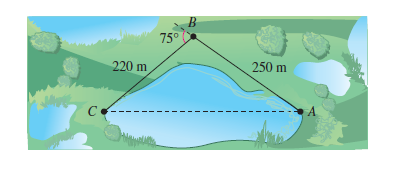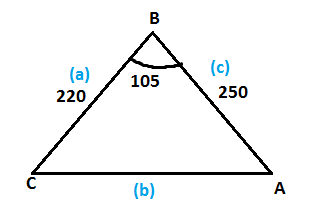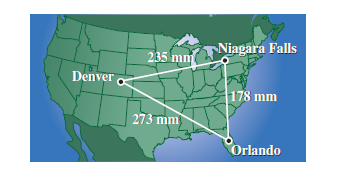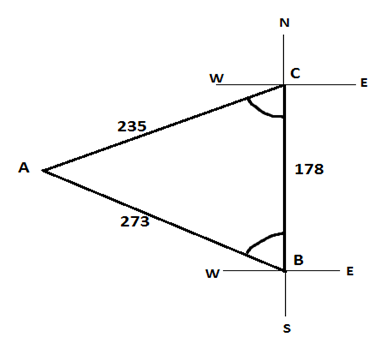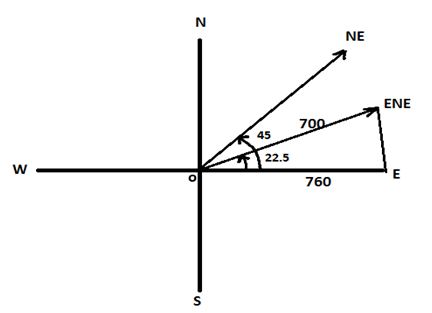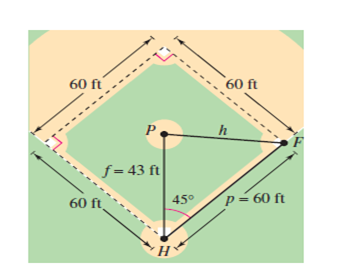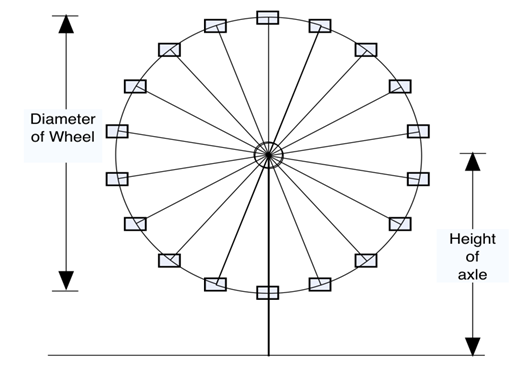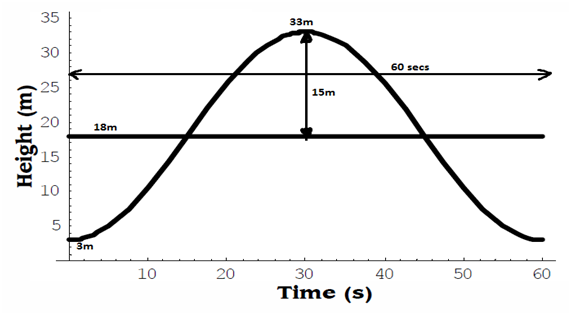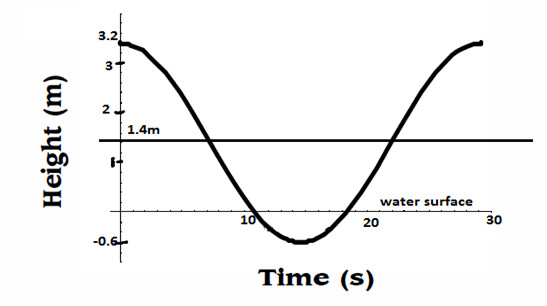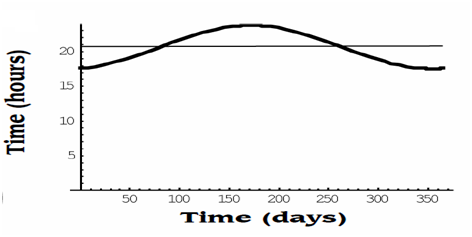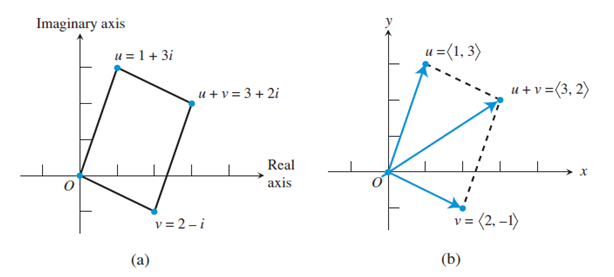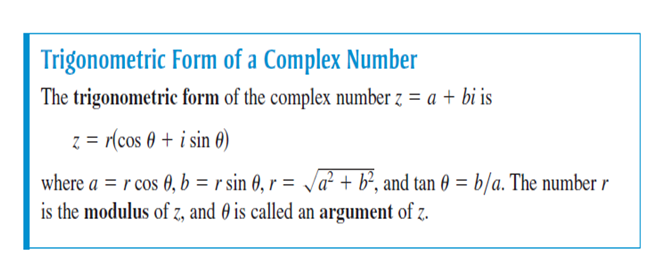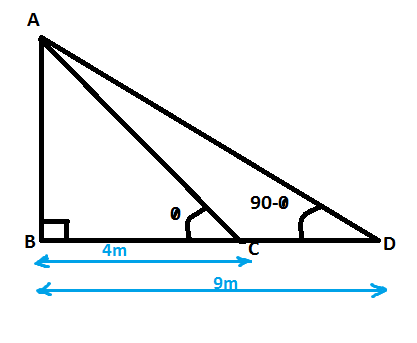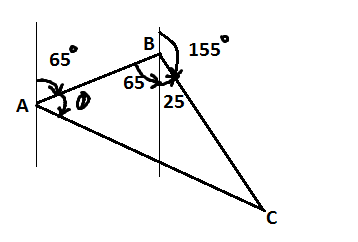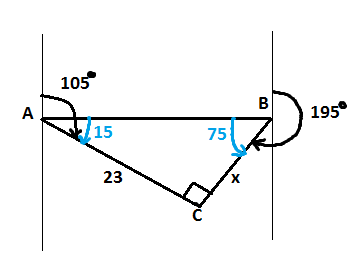Law of Cosines and its Applications
Law of Cosines and its Applications
Law of Cosines is used to solve triangles in the following two cases.
- Three sides (SSS)
- Two sides and included angle (SAS)
because in these cases none of the ratios in law of Sines would be complete.
Example1. Using law of Cosines, solve the triangle with given sides a=10 , b=12 , c=16. Round your answers to two decimal places.
Solution: Using alternative form of law of Cosines,
Plug in values of a, b and c
To find third angle we can use angle sum property of triangles.
C = 180-(38.62+48.51) =92.87°
Example2. Determine whether the Law of Sines or the Law of Cosines is needed to solve the triangle. Then solve the triangle.
a=8, c=5, B=40
Solution: Given two sides and included angle so we use law of Cosines.
b^2 = 27.71644
b = 5.26
Next we can use law of Sines to find Angle A or C.
37.66° =C
To find angle A, we can use angle sum property of triangle
A= 180-(40+37.66) =102.34°
Example3. To approximate the length of a marsh, a surveyor walks 250 meters from point A to point B, then turns 75° and walks 220 meters to point C as shown in figure. Approximate the length AC of the marsh.
Solution: Here we know that < B =180-75=105 and we get the following equivalent geometric figure.
We need to find length AC which is side b, using law of Cosines,
b^2 = 139370.09496
b = 373.32 miles
So the length of marsh is 373.32 miles.
Example4. On a map, Orlando is 178 millimeters due south of Niagara Falls, Denver is 273 millimeters from Orlando, and Denver is 235 millimeters from Niagara Falls (see figure).
(a) Find the bearing of Denver from Orlando.
(b) Find the bearing of Denver from Niagara Falls.
Solution:
Here we need to find angle B and C for parts a and b respectively. So using law of Cosines,
Bearing of Denver is towards west of Orlando which is in north so it is written as
B = N58.4° W
Bearing of Denver is towards west of Niagara which is in south so it is written as
C = S81.5° W
Example5. Two airplanes flying together in formation take off in different directions. One flies due east at 350 mph, and the other flies east-northeast at 380 mph. How far apart are the two airplanes 2 hr after they separate, assuming that they fly at the same altitude?
Solution: Following diagram will help to understand the given situation. Airplane 1 is moving along the track OE and airplane 2 is moving along track OENE. Angle between east and east northeast is always 22.5°
In 2 hrs. airplane 1 will travel the distance =350*2= 700 miles
In 2 hrs. airplane 2 will travel the distance =380*2= 760 miles
So we have sides as 700 and 760 and included angle as 22.5.
Using law of cosines,
b = 290.84 miles
So the two airplanes are 290.84 miles apart after 2 hours.
Practice problems:
- Use law of Cosines to solve the following triangles .
a) A=120° , b= 6 , c=7
b) a=8, b=19, c=14
- The pitcher’s mound on a women’s softball field is 43 feet from home plate and the distance between the bases is 60 feet, as shown in figure. (The pitcher’s mound is not halfway between home plate and second base.) How far is the pitcher’s mound from first base?
Answers:
- a) B=27.46° , C=32.54° , a=11.27
b)A=22.08° , B=116.80° , C=41.12°
2. 42.43 ft.

